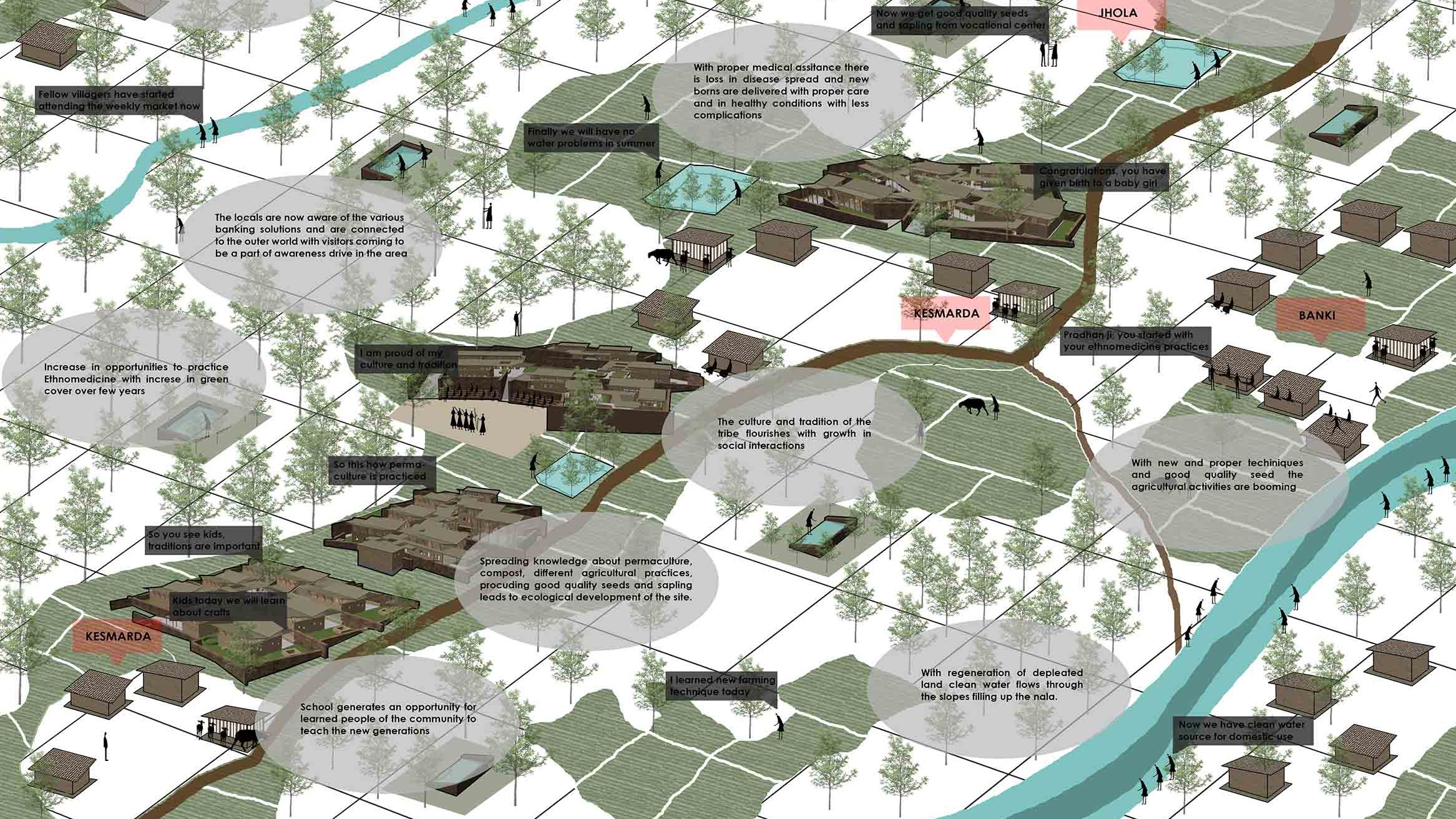top architecture design thesis 2020


SCET ARCHITECTURE
SURAT, INDIA

Design thesis authored by
HariT Naik
share
THESIS SPECIFICATIONS
Thesis Title : CONFLICT OF MAN AND NATURAL SYSTEM – A case of rural settlements prone to vulnerability in India
Location : Bodai-Daldali mine, Kawardha, Chhattisgarh
Project type : Restitution of native culture, economy & site deterioration
Year of completion : 2020
Name of Thesis mentor: Prof. Niraj Naik
Humans and nature are intimately and interdependently intertwined
They interact reciprocally over time and affect each other in a relationship characterized by continuous change. Since ages indigenous people have been living in harmony with the nature. Utilizing the resources from the nature and reciprocating in return by helping it to perish. Nature had been providing us with various life sustaining commodities the, people draw deeply from harmonious relationships with the land for their physical, psychological and spiritual health and wellbeing. If the self/identity is separated from the land, both the self/identity and the land are diminished and suffer. This intimate unified relationship inspires and obligates people to value, respect and keep nature in its original purity and potency as it shares the same consciousness of the ancestors and contains all the knowledge of the original creation. The highly sophisticated kinship system, especially the practice of reciprocity, is designed to maintain harmony among and between nature and humans. Achieving balance is an individual and collective responsibility. But with change in time the relation is constantly degrading. The ever increasing population and its increasing needs is leading to fast degradation of the nature and its surroundings. This mismatch in the relation leads to various problems threatening the human existence. The indigenous people living harmony from years are the one most vulnerable to the effects of the conflict. These leads to extinction of various tribes. The culture and the tribal heritage is degrading with time. The fast growing mining sector is one of the major contributors of the conflict. It directly affects the nature and also the people living nearby. The hidden treasures which the locals and the place preserves acts as the driving factor of such industrial sectors. Once the mining is done the locals and the site is abandoned. Left back with destroyed natural landscape which the locals used to depend on for survival. The burden of the environmental damage falls upon the most vulnerable- indigenous communities.
“Chhattisgarh” – a land rarely recognized for the treasures it preserves. It is endowed with a rich cultural heritage and attractive natural diversity. Its scenic beauty and the awe it binds you in is beyond expression. The riverine landscape, the paddy fields, the tribes; some of the best-kept secrets of Chhattisgarh. There are many problems that have started distorting the true identity of the place. Mines encroach the potential agricultural, forest and tribal lands and render them infertile and useless.My thesis involves the study of an inactive Bauxite mine of the Kawardha (Kabirdham) district of Chhattisgarh. One of the smallest and least developed district of the state rich in mineral ores and large tribal settlements. The study area lies on plateau of the Maikal Range with inactive mine on the top and settlements in and around the mine. 70km from the nearest town of Kawardha.The projects tends to understand the vulnerabilities of the local community living in harsh conditions caused by the difficult terrain and mining.
The projects aims to regain the break in the human nature relation and help the locals to cope with the current scenario and provide a platform for betterment and upliftment of the Baiga Community. The project works on the objectives of regaining the equilibrium, protection from natural cause, holistic design program, comprehensive sustainable design, innovative building techniques, and participatory architecture. An intervention consisting of 5 institutional buildings namely, school, medical clinic, veterinary clinic, vocational training center and community center tends to work in favour of the locals and help improve their condition and position in the current world. The interventions focus on uplifting the community along with making them capable to regain the charm and beauty of the surrounding landscape damaged due to mining. The process of intervening will include the involvement of the locals at each step making it more community centric. The approach lies in the thin line between the regional architectural concern and contemporary articulation of spaces. Integration of functions in a singular built form drives the project from retaining a sense of belongingness for the community, as they are accustomed to perform most of their chores in on open environment. So the concept of segregating the functional spaces into hierarchy of built and opens spaces is realized, this gives a distinctive identity to the project. Multiple Pause points in between function spaces aid in weaving the contemporary architectural expression with traditional ways of living.
It is said that-
The relationships foster and turned more harmonious when people are better connected to their natural habitat, for their physical, psychological and spiritual health and wellbeing.
the end
Copyright information: ©️ Student author 2021. Prior written authorization required for use.
Request permissions: If you wish to use any part of the documentation forming part of the undergraduate thesis submitted to DSGN arcHive, please seek prior permission from the concerned student author through the respective college/university.
Exclusion of liability: DSGN arcHive and its owner do not undertake any obligation to verify the ownership of any content submitted for publication/broadcast on this website and shall not be liable for any infringement of copyright by, or unauthorized use of, such content.
HOMEPAGE
Copyright © 2025 DSGN arcHive
